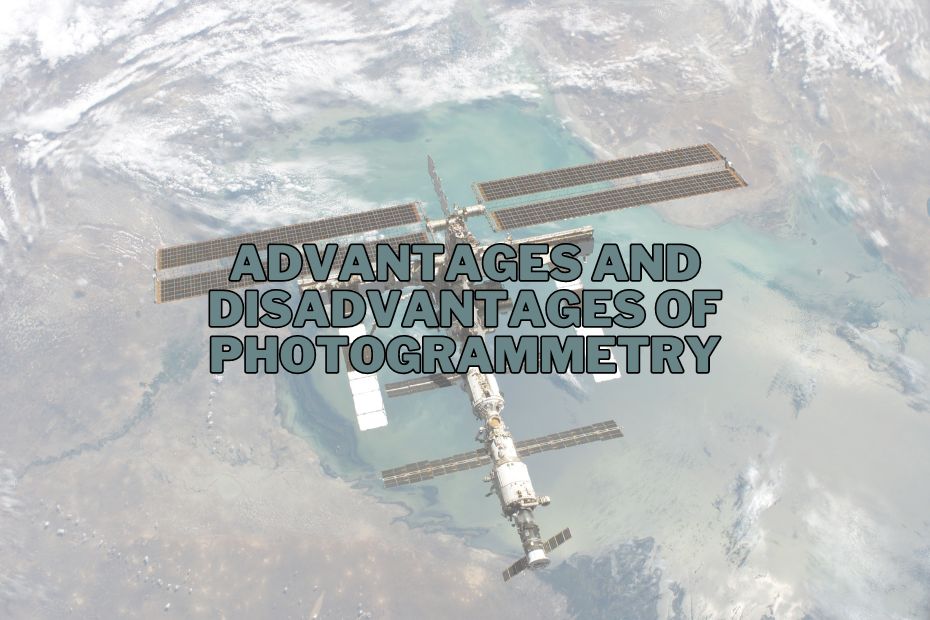Photogrammetry is a powerful technique that has gained significant popularity in various industries over the years. It involves the process of capturing measurements and data from photographs to create detailed and accurate 3D models. While photogrammetry offers several advantages, it also comes with its fair share of disadvantages. In this article, we’ll delve into both the advantages and disadvantages of photogrammetry to help you understand its applications and limitations.
The advantages of photogrammetry include high accuracy and precision, cost-effectiveness, flexibility, and safety in inaccessible areas. Disadvantages involve dependency on environmental conditions, limitations with texture less surfaces, initial equipment and software costs, need for technical expertise, and complex data processing. This technology is widely used in surveying, mapping, archaeology, and entertainment.
Understanding Photogrammetry
Photogrammetry is a method that measures and maps things from photographs. Imagine using pictures taken from different angles to create a complete, detailed 3D model of an object, building, or even a whole area. This technique is not only fascinating but also incredibly useful in a range of fields
Advantages of Photogrammetry
Photogrammetry involves the use of photographs and specialized software to create precise 3D models. It has found applications in various fields, from geospatial mapping to industrial design. Let’s explore the advantages of this technique.
1. High Accuracy and Detail
Photogrammetry excels in capturing intricate details and delivering precise measurements, which is pivotal in sectors where exactness is paramount. The types of photogrammetry used can influence the level of detail achieved, with certain types better suited for specific applications.
2. Cost-Effective
When it comes to surveying expansive areas or sizable objects, photogrammetry emerges as a more cost-effective solution compared to traditional methods. It offers a budget-friendly alternative without compromising on the quality of data collected.
3. Non-Intrusive
As a non-contact technique, photogrammetry provides a safe means to measure and examine delicate or hazardous subjects and settings, ensuring there’s no compromise to their integrity. Learn more about this non-intrusive method in various applications, including its role in aerial photography.
4. Versatility
The adaptability of photogrammetry is evident across multiple disciplines such as archaeology, architecture, and more. Its versatile nature allows for widespread utility, which you can explore through the diverse types of aerial photography it encompasses.
5. Time Efficiency
Photogrammetry is renowned for its swift coverage of large territories, especially when deploying aerial photogrammetry, thus enhancing efficiency in time-sensitive projects.
6. Remote Sensing Capability
The technique’s remote sensing aspect is indispensable for studying inaccessible or challenging terrains, offering a glimpse into otherwise unreachable locales, as highlighted in the application of remote sensing in orthophoto.
Disadvantages of Photogrammetry
1. Dependency on Light and Weather Conditions
The reliance of photogrammetry on optimal lighting and favorable meteorological conditions can be a drawback, as subpar lighting or adverse weather can degrade photo quality and, by extension, the results.
2. Requires Skilled Personnel
The application of photogrammetry demands a skilled workforce for data interpretation. This necessity for specialized expertise can limit its accessibility to those lacking the requisite knowledge.
3. Equipment Cost
Although it may be cost-effective in the long run, the initial expenditure on superior cameras and drones represents a considerable financial undertaking, which is examined in the comparison of LiDAR vs. aerial photography.
4. Processing Time and Computational Requirements
Handling extensive data sets can be laborious, necessitating robust computing capabilities. The technical demands of processing can be a significant factor when considering photogrammetry.
5. Limitations in Texture less or Reflective Surfaces
Surfaces that are either devoid of texture or highly reflective pose challenges for photogrammetry, as such conditions can impede the acquisition of accurate measurements.
6. Obstructions and Occlusions
The inability of photogrammetry to measure what is concealed from the camera’s perspective can lead to incomplete data, which is a limitation inherent to the method’s reliance on line-of-sight.
Conclusion:
In conclusion, photogrammetry offers numerous advantages, including cost-effectiveness, non-invasiveness, high accuracy, versatility, and remote data collection. However, it also comes with disadvantages like equipment requirements, susceptibility to environmental factors, processing time, the need for expertise, and data storage challenges. Understanding these pros and cons is crucial for making informed decisions regarding the implementation of photogrammetry in various industries.
FAQs: Advantages and Disadvantages of Photogrammetry
Is photogrammetry suitable for small-scale projects?
Yes, photogrammetry can be adapted for small-scale projects, but it still requires specific equipment and expertise.
How long does it typically take to process photogrammetry data?
The processing time for photogrammetry data can vary widely depending on the project’s scale and complexity. It may range from hours to several days.
What industries benefit the most from photogrammetry?
Industries such as construction, agriculture, archaeology, and surveying benefit significantly from photogrammetry’s capabilities.
Can photogrammetry be used in adverse weather conditions?
Photogrammetry is sensitive to weather conditions and may produce lower-quality results in adverse weather or poor lighting.
Is photogrammetry a replacement for traditional surveying methods?
While photogrammetry is a valuable tool, it may not entirely replace traditional surveying methods, especially in highly specialized applications. It often complements existing methods for improved results.
